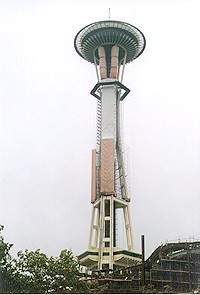
Certified Coatings of California
Certified Coatings of California bring more than 30 years of experience to industrial maintenance and protective coating work, and have been pioneers in recycled steel abrasive work.
by Bob Graham
is in the enviable position of not having to worry about finding new business. The Concord, California-based company and its predecessor, Clark Painting Company, bring more than 30 years of experience to industrial maintenance and protective coating work, and have been pioneers in recycled steel abrasive work.
“We target the large projects because we basically have unlimited bonding and less competition,” says Fred Cagle, the privately held company’s chairman and CEO. He manages most of the pre-painting phases of the business, including bidding and negotiating contracts. Since its formation in January, 1986, Certified Coatings has worked on such diverse jobs as internally lining the 20 tanks buried inside the mountains above Pearl Harbor and painting the 605-foot Space Needle in Seattle, Washington. 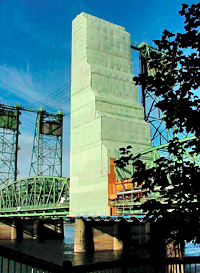 Among the company’s current projects are a $22 million/50 employee paint job at the San Rafael/Richmond Bridge and a $10 million/50 employee project at the San Mateo Bridge, both in the San Francisco Bay area. Certified Coatings is also painting the Crescent City Connection Bridge in New Orleans ($21 million/70 employees) and has a $10 million job (30 employees) painting the Hakalau, Paheehee and Kapaupalua Bridges in Hilo, Hawaii. Among the company’s current projects are a $22 million/50 employee paint job at the San Rafael/Richmond Bridge and a $10 million/50 employee project at the San Mateo Bridge, both in the San Francisco Bay area. Certified Coatings is also painting the Crescent City Connection Bridge in New Orleans ($21 million/70 employees) and has a $10 million job (30 employees) painting the Hakalau, Paheehee and Kapaupalua Bridges in Hilo, Hawaii. Certified Coatings is one of 120 companies in the U.S. with the special QP-1 and QP-2 (Hazardous Materials) certification through the Painting Contractors Certification Program (PCCP). These certifications, the company’s track record for bringing jobs in on schedule and on budget, and its ability to find adequate bonding for big jobs help it earn a spot among the finalists in most bidding situations, says Cagle, a former engineer for Fluor Constructors who became a painting contractor in 1975.  He formed Certified Coatings in 1986, two years after buying Clark Painting Company, a 400-employee painting contractor that did similar work from 1966 until its asset sale to Cagle. About 40 Clark employees were asked to stay with him, including Certified Coating’s president, John Wright. Cagle oversees between 175 and 400 employees working on fewer than 20 jobs a year, mostly very large and/or difficult jobs. He formed Certified Coatings in 1986, two years after buying Clark Painting Company, a 400-employee painting contractor that did similar work from 1966 until its asset sale to Cagle. About 40 Clark employees were asked to stay with him, including Certified Coating’s president, John Wright. Cagle oversees between 175 and 400 employees working on fewer than 20 jobs a year, mostly very large and/or difficult jobs. Certified Coatings ranked among the top 20 painting contractors in 2001, according to the Engineering News Record, an engineering industry trade publication. The company had revenues of about $26 million in 2002, an increase of $7 million over 2001. About 60 percent of the company’s business comes from bridges. “We’re selective bidders now,” says Cagle, noting that the company handled about 200 to 300 jobs a year in 1984. “We don’t bid on a job a week. We base our bidding decisions on the location of the job, difficulty and the engineers’ estimate of the work. We are mostly an open shop contractor.” 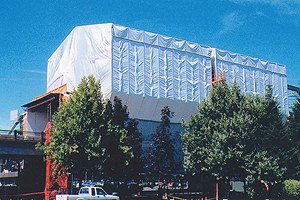 Certified Coatings avoids strong union states like New York. The company works mostly on the West Coast, as well as in Hawaii and Louisiana. Previously, the company ran projects in international locations like Australia, Indonesia and the Middle East, but they carefully select foreign projects at this time. Certified Coatings avoids strong union states like New York. The company works mostly on the West Coast, as well as in Hawaii and Louisiana. Previously, the company ran projects in international locations like Australia, Indonesia and the Middle East, but they carefully select foreign projects at this time. “It’s not the right atmosphere. The political climate is erratic and the exchange rates aren’t good for American money right now. Also, there are very few projects in foreign countries that can guarantee payments right now,” Cagle said. Getting equipment to a job site can be complicated. Whenever possible, his employees send trailers filled with equipment to the site, including scaffolding, platforms, containment materials (including large dust collectors up to 70,000 cfm) and 150 psi, 1,300 cfm air compressors.
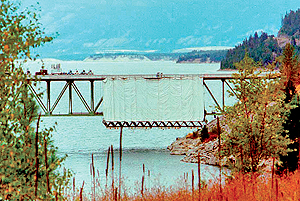
containment, the company uses either recyclable steel abrasive or non-recyclable mineral abrasive. Most project specifications require either water-based or solvent-based coatings.
Cagle favors solvent, rather than water-based, coatings, especially on sandblasted steel. Most jobs get three coats: a primer coat after the abrasive blasting, a second coat, and then a topcoat. For many jobs, they also put a stripe coat on all edges, rivets and/or bolts.
Unlike some of his competitors, Certified Coatings does all its own access systems, containments and traffic shields. They also design and build their own dust collectors and steel abrasive recycling equipment. They use diesel-powered equipment except in areas that offer cheaper electrical power, where they sometimes use electric compressors, which are quieter and eliminate the possibility of spills when fueling.
To keep control over all operational aspects of a project and ensure proper safety and planning, Cagle’s company does its own engineering. “We try to keep it in-house, but an outside firm always checks it.”
While some painters consider safety an expense, Cagle says providing a safe work environment actually saves money for him and his clients.
Certified Coatings employs a full-time safety officer at each job site and holds “too many safety meetings to count,” Cagle says. “We employ the safety officer voluntarily, even when it isn’t required for the job.”
The company has a good safety record, and as a result, Cagle says, Certified Coatings has a low experience modification rate, which helps it obtain low workers’ compensation insurance rates. “The safer we are, the better it is when we have to bid a job. When rates go up, we have to pass on that additional cost in our bidding,” Cagle says.
However, the increasingly litigious nature of our society causes many problems. Cagle spends an increasing amount of time dealing with potential legal conflicts, usually from workers’ compensation situations or claims by people who allege that his company oversprayed their vehicles near job sites. He tells the story of a company (he did not name it) that was painting a structure green, yet someone whose vehicle was parked nearby claimed that overspray of red paint was caused by the painting work.
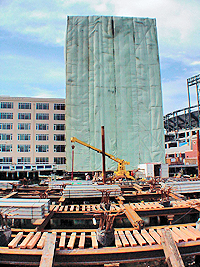 Faced with the choice of going to court or settling quickly, Cagle admits that he usually chooses the latter. “It’s less expensive for us in the long run,” he says. Faced with the choice of going to court or settling quickly, Cagle admits that he usually chooses the latter. “It’s less expensive for us in the long run,” he says.
Despite all his work to contain legal fees and insurance claims, his insurance rates have jumped from less than $400,000 a year to more than $1 million a year. Insurance rate increases are common, he says, the result of post-Sept. 11 insurance claims. Cagle notes that his deductibles have increased substantially too.
Cagle trusts his experience when bidding jobs. He wants projects that fit his business plan, and he carefully considers his bid price before submitting it.
“You must resist the temptation to low-bid a job hoping for extras or claims. Low bidding will cost you. There’s a right price for each job and you don’t want to go below that,” he cautions.
His company is often not the lowest bidder on a project. However, the organization seeking bids often talks to two or three of the lowest bidders, comparing their experience and approach in face-to-face meetings. These meetings are where Cagle can often impress upon the representatives that his company can and will provide the best value for the money.
An important component to Certified Coating’s success is Cagle’s ability to choose the right employees. He says the company avoids hiring residential painters. “I want industrial painters with good experience.” Ideally, he seeks people who have structural steel painting experience.
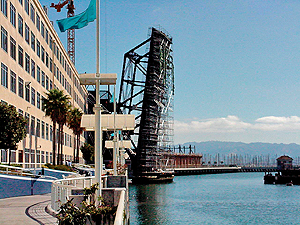 For his project managers, estimators and engineers, he is looking for “good training and common sense.” He says it is a constant challenge to find competent jobsite supervision, and that it is absolutely necessary to successfully compete in today’s environment. For his project managers, estimators and engineers, he is looking for “good training and common sense.” He says it is a constant challenge to find competent jobsite supervision, and that it is absolutely necessary to successfully compete in today’s environment.
Cagle relishes the challenges his company has overcome. Repainting the Space Needle, a project completed in 1998, proved challenging because it rained almost every day. They managed to establish good containment, and that enabled employees to work with protection from the rain at night without delays or serious injuries. “That was an accomplishment, a real challenge,” he says. The Space Needle was open for business every day during the abrasive blasting and repainting operation.
The Pearl Harbor job required Certified Coatings to internally line 20 tanks carved into the mountain above Pearl Harbor. They had to find a way to abrasive blast and paint the interior of the tanks although the closest tank was 2,000 feet away from the painting equipment with access only through tunnels and a small inlet and outlet at the bottom of each tank. The five-year job stretched the company, but it was worth it. “We proved we could do it even with all of the challenges of those tanks,” Cagle says.
He says he especially likes to hear his phone ring with news of upcoming large projects that require special expertise with tight schedules. “It keeps things fun and exciting,” he says.

|

